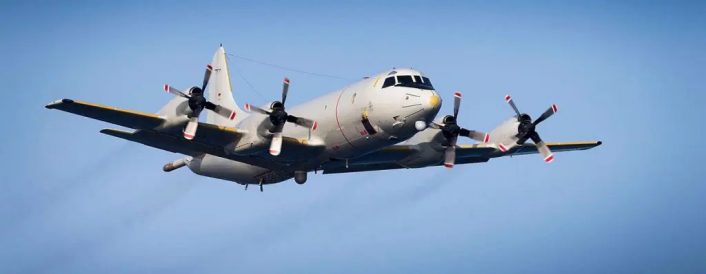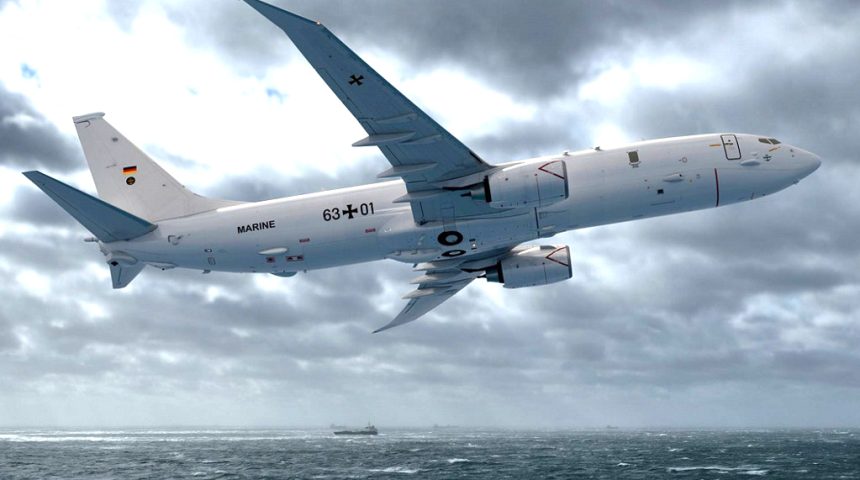The P-8A Poseidon will replace the ageing P-3C Orion until the new Franco-German Maritime Airborne Warfare System is ready for operational service.
Following the reports in May that Germany was looking to replace its ageing fleet of Lockheed P-3C Orion with the P-8A Poseidon, the Bundesministerium der Verteidigung (BMVg-German Federal Ministry of Defence) signed a letter of offer and acceptance with Boeing to purchase five new maritime patrol aircraft. With this deal, Germany becomes the eighth customer of the P-8A Poseidon, joining the United States, Australia, India, the United Kingdom, Norway, Korea and New Zealand.
The signing of the letter of acceptance on June 30, 2021 now paves the way for the signing of the final contract, which includes the corresponding mission and communication equipment, an initial supply of spare parts including accessories, ground checkout equipment and special tools, a mission support system as well as technical and logistic support. The German Budget Committee approved the purchase last week with a total budget of €1.1 billion.
“Boeing is honored to provide Germany with the world’s most capable maritime surveillance aircraft,” said Michael Hostetter, Boeing Defense, Space & Security vice president in Germany. “We will continue to work with the U.S. government, the German government and industry to establish a robust sustainment package that will ensure the German Navy’s P-8A fleet is mission ready.”
As already mentioned when the U.S. Department of State approved the Foreign Military Sale to Germany, the Poseidon is considered as a temporary replacement to avoid a capability gap with the retirement of the Orion. Initially, the P-3C was supposed to be retired in 2035, when the new German-French cooperation project Maritime Airborne Warfare System (MAWS) was expected to be ready for service.
The German Federal Ministry of Defence, however, ended in June 2020 the modernization plan of the Orion because of “costs and technical difficulties”, beginning a market survey to avoid an unacceptable capability gap and taking into account all interactions with the MAWS program. The MAWS cooperation was announced during the 2018 ILA airshow in Berlin, with the candidate aircraft being the Airbus A320M3A (Modular Multi-Mission Aircraft) in its MPA variant.

This acquisition is considered urgently necessary by the BMVg for the seamless maintenance of the long-range maritime reconnaissance and long-range airborne antisubmarine warfare capabilities in the period from 2025 to 2035. In fact, even before the cancellation of the P-3C Orion modernization plan, these capabilities were already at risk as of the eight aircraft still in service, half of them are inoperable “due to damage that cannot be repaired economically”. Out of those remaining four aircraft, according to the government, only two aircraft will probably still be usable from 2023.
The BMVg also confirmed the intention to continue working on the acquisition of about 30 F/A-18E/F Super Hornets and 15 E/A-18G Growlers to replace the nuclear capability of the Tornado IDS and the Electronic Warfare (EW) capability of the Tornado ECR, respectively. During a recent visit in the USA, the Minister was in fact briefed also on the F/A-18 and its capabilities while at Naval Station Norfolk.
Ministerin @akk lässt sich auf Norfolk auch von einer Pilotin der F18 in das Kampfflugzeug einweisen. Die #Bundeswehr will dieses als Nachfolger für den Tornado in der Version der nuklearen Teilhabe und elektronische Kampfführung anschaffen. pic.twitter.com/gLzgieSb6T
— Verteidigungsministerium (@BMVg_Bundeswehr) June 30, 2021









